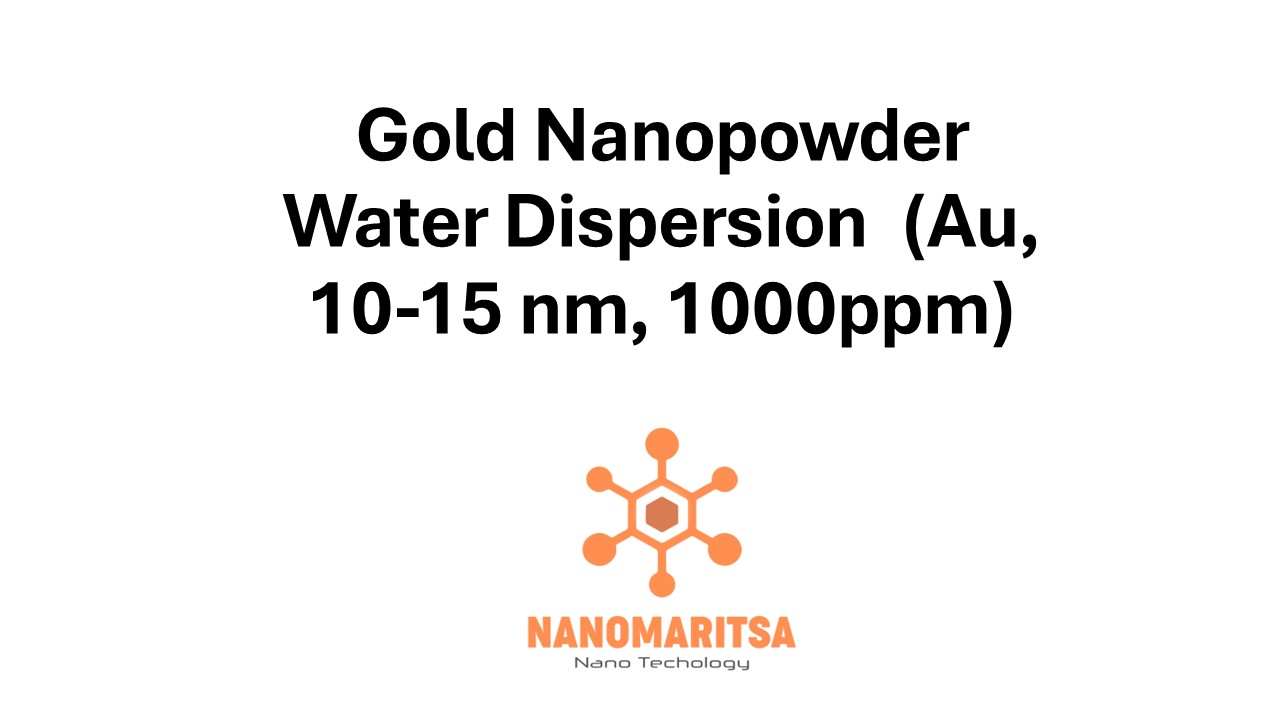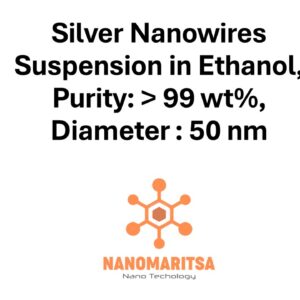Gold Nanopowder Water Dispersion (Au, 10–15 nm, 1000ppm) is a highly concentrated solution of gold nanoparticles suspended in water. Here’s an overview of its key features and applications:
- Key Features:
- Gold (Au): The dispersion primarily contains gold, which is known for its excellent biocompatibility, electrical conductivity, optical properties, and catalytic activity.
- Nanoparticles: The gold particles have an average size of 10–15 nanometers (nm), providing them with high surface reactivity, which enhances their performance in various applications.
- Water Dispersion: The gold nanoparticles are uniformly dispersed in water, forming a stable colloidal solution that prevents aggregation or settling.
- Concentration: This dispersion has a concentration of 1000 ppm (parts per million), meaning it contains 1000 milligrams of gold nanoparticles per liter of the solution.
- Properties:
- Small Particle Size: The 10–15 nm size increases the surface area and reactivity of the nanoparticles, making them more effective in applications such as catalysis, sensors, and imaging.
- Stability: Stabilizers are added to the dispersion to prevent the nanoparticles from aggregating, ensuring uniform distribution and consistency in the solution over time.
- Optical and Catalytic Properties: Gold nanoparticles exhibit surface plasmon resonance (SPR), which gives them unique optical characteristics. They also have high catalytic activity, particularly in oxidation reactions.
- Applications:
- Biomedical Applications: Gold nanoparticles are widely used in drug delivery, diagnostic imaging, and cancer treatment due to their biocompatibility and optical properties.
- Catalysis: Due to their high surface area and reactivity, gold nanoparticles are used as efficient catalysts in chemical reactions, particularly in selective oxidation and other gold-catalyzed processes.
- Sensors: Gold nanoparticles are utilized in biosensors and chemical sensors to detect specific molecules. Their optical properties, enhanced by SPR, make them ideal for surface-enhanced spectroscopy and sensing.
- Electronics: The high concentration of gold nanoparticles is used for conductive coatings, nanoelectronics, and other electronic applications where strong conductivity and durability are required.
- Handling and Safety:
- Toxicity: Although gold nanoparticles are generally considered biocompatible, they should be handled carefully to avoid inhalation, ingestion, or skin contact.
- Storage: Store the dispersion in a cool, dark environment to maintain the stability of the nanoparticles and prevent degradation or aggregation.
- Precautions: Use appropriate personal protective equipment, including gloves, goggles, and lab coats, when handling the dispersion. Work in a well-ventilated area or under a fume hood to avoid exposure to airborne particles.
With a concentration of 1000 ppm, this dispersion provides a very high amount of gold nanoparticles, making it suitable for applications requiring strong catalytic activity, conductivity, or high sensitivity in sensors and biomedical fields.
SKU: MN07MPD0211
Category: Metal Dispersions
| Measurement (ml) | 100 ml, 500 ml, 1000 ml |
|---|
Related products
-
Metal Dispersions
Natural Graphite Powder 20wt% Water Dispersion, 99.9%, <1 micron
0 out of 5(0)SKU: MN07MPD0222€120.00 This product has multiple variants. The options may be chosen on the product page -
Metal Dispersions
Silver Nanowires Suspension in Ethanol, Purity: > 99 wt%, Diameter : 50 nm
0 out of 5(0)SKU: MN07MPD0207€540.00 This product has multiple variants. The options may be chosen on the product page -
Metal Dispersions
Conductive Carbon Black Nanopowder Water Dispersion ( C, 150 nm, 35wt% )
0 out of 5(0)SKU: MN07MPD0221€120.00 This product has multiple variants. The options may be chosen on the product page -
Metal Dispersions
Sulphur Nanopowder Water Dispersion (S, 40-50nm, 10wt% )
0 out of 5(0)SKU: MN07MPD0219€130.00 This product has multiple variants. The options may be chosen on the product page






